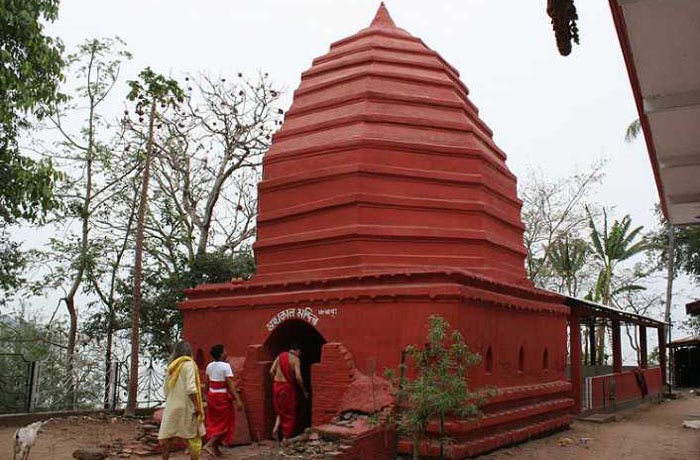Umananda Temple

Information of Umananda Temple, Guwahati, Kamrup, Assam
The Umananda Temple is quite a popular shrine in the state of Assam and is located in a small island called Peacock in the middle of the famous and sacred Brahmaputra river in Guwahati. The island is learnt to be amongst the smallest most populated riverine islands across the globe. The visitors are taken to the island on the country boats which operate from the bank of the mentioned river.
Umananda Temple Religious Significance
The presiding deity of this revered Hindu temple is Lord Shiva. The temple is believed to be one of the most visited shrines of the state. Lord Shiva is known and worshipped as Umananda in this particular temple. The mount on which the shrine has been constructed is known by the name of Bhasmacala which actually means the 'hill of ashes'. It is commonly believed that offering prayers to the deity on the day of new moon according to the Hindu calendar or the Amavasya day specifically which falls on the starting day of the week ensures maximum bliss. The occasion of Shiva Chaturdasi is supposed to be one of the most celebrated and vibrant events observed by the temple every year.
Umananda Temple Mythology & History
According to a popular Sanskrit work known as Kalika Purana it has been learnt that just during the inception of the aspect of creation, Lord Shiva had scattered ashes on this place where the temple is currently located and also passed on knowledge to his consort, goddess Parvati. It is said that while Lord Shiva was indulged in an act of meditation on the top of the stated hill, Kamadeva known as the 'God of Love' disrupted his yoga as a result of which Lord Shiva went into a fit of rage and burnt the god into ashes. Therefore, this is how the mountain on which the temple is located got its name from. Lord Shiva is stated to have existed in this place as Bhayananda. The mentioned mountain is also alternatively known as Bhasmakuta. As per the script of Kalika Purana it is said that Urvasikunda is located here and goddess Urvasi who fetches nectar for the purpose of pleasure of Kamakhya is also known to reside on the mountain.
Umananda Temple Architectural Significance
The popular shrine of Umananda was constructed in the year 1694 A.D. by Bar Phukan Garganya Handique as per the instructions of Gadadhar Singh an Ahom King and was acknowledged to be amongst the strongest and capable rulers hailing from the dynasty of Tai Ahom. The king was known to be a devoted follower of Lord Shiva. However, the actual temple was majorly damaged owing to the shattering earthquake which took place in 1897. The temple was later re-established by an affluent local merchant who preferred carving the interior portion of the main shrine dedicated to Lord Shiva with Vaishnavite sayings. The formation of the Umanand Temple is known to have included quite a few rock cut statues which prominently and fervently demonstrates the masterly dexterity of the local or rather Assamese workers. It is quite evident from the figures that the people attending worships during that period pursued all the main Hindu gods. Depictions of Ganesha, Devi along with the representation of a scorpion as insignia, Surya and Shiva accompanied with Lord Vishnu as well as his ten different forms or incarnation can be observed here in the temple. The main shrine of Umananda temple is reached with the help of a series of vertical steps.
- Andhra Pradesh Temples
- Assam Temples
- Bihar Temples
- New Delhi Temples
- Goa Temples
- Gujarat Temples
- Jammu and Kashmir Temples
- Karnataka Temples
- Kerala Temples
- Madhya Pradesh Temples
- Maharashtra Temples
- Odisha Temples
- Punjab Temples
- Rajasthan Temples
- Sikkim Temples
- Tamil Nadu Temples
- Telangana Temples
- Uttar Pradesh Temples
- Uttarakhand Temples
- West Bengal Temples